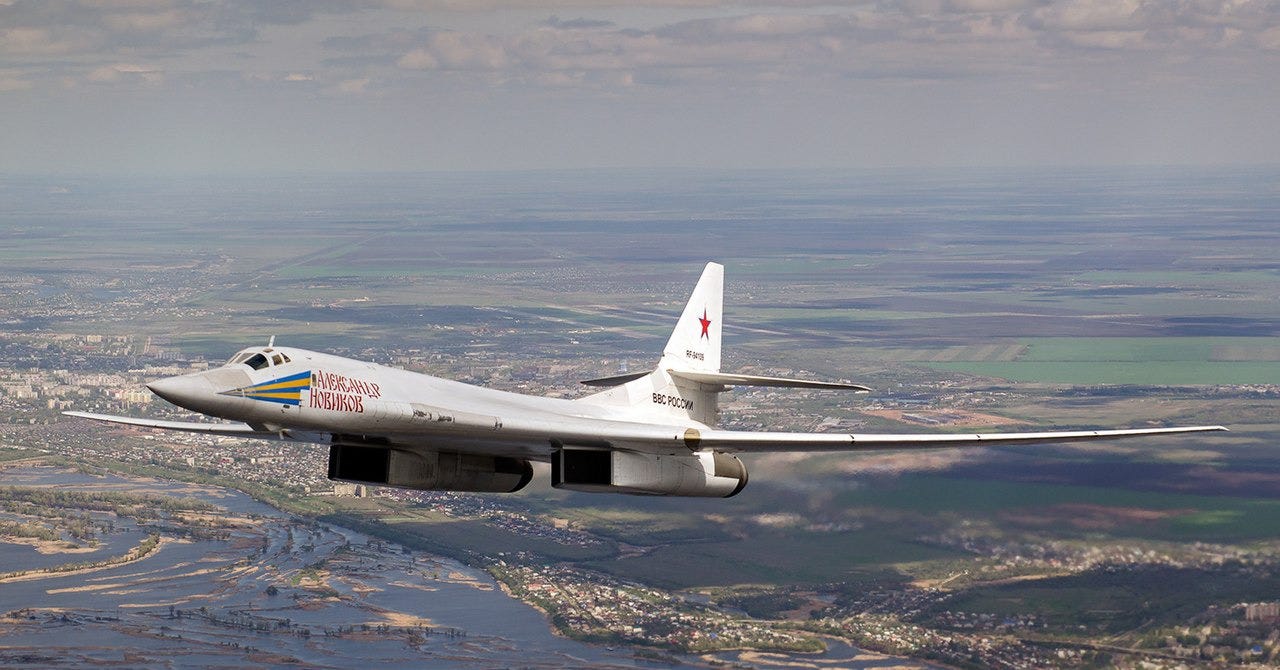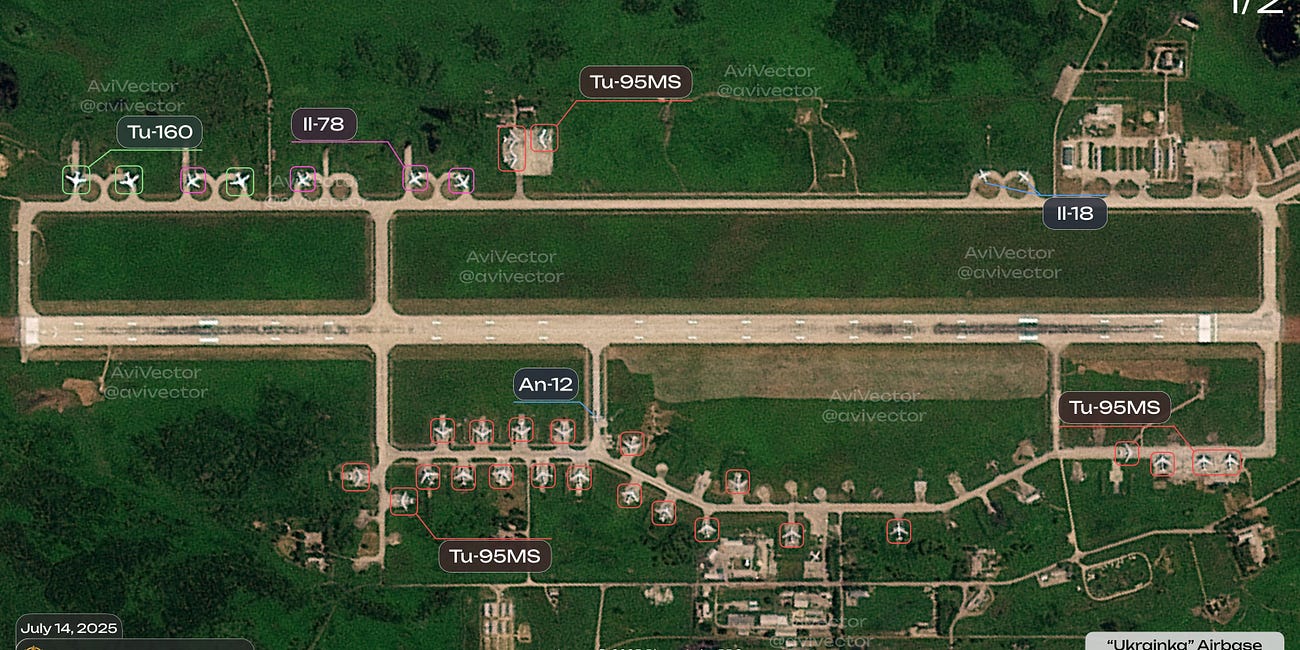Why Didn't Ukraine Target Russia's Best Bombers—Its Tu-160s?
The giant warplanes escaped the June 1 drone raid that hit 11 other bombers
In a devastating special operation on June 1, the Ukrainian state security agency—the vaunted SBU—smuggled truckloads of tiny explosive drones close to five Russian air bases.
The drones blew up at least 11 of the Russian air force heavy bombers—seven Tupolev Tu-95s and four Tu-22Ms—as well as a rare Beriev A-50 radar plane and an airlifter.
The drones didn’t touch the air force’s best bombers, however. All 16 Tupolev Tu-160s escaped the raid. Why?
It’s apparent, six weeks after the SBU’s Operation Spider Web, that the Ukrainians targeted the bombers that have been most active in Russia’s unrelenting aerial bombardment of Ukrainian cities.
That would be the four-engine, propeller-driven Tu-95s, each of which can haul up to eight, 2,000-mile Kh-101 cruise missiles packing 1,000-pound warheads. When Russia strikes Ukrainian cities—something that’s been happening roughly twice a week in recent months—the raids usually involve 500 or 600 munitions.
Most are 440-pound Shahed drones, but there are also usually a few Kh-101s in the mix, normally launched by a pair or quartet of Tu-95s. The twin-jet, swing-wing Tu-22Ms have also flown a few sorties against Ukrainian cities lately, but many fewer than the Tu-95s have—likely owing to a shortage of the Tu-22M’s main missile: the 600-mile-range Kh-32.
Sitting out the war
The swing-wing Tu-160s, by contrast, have only feinted toward Ukraine in the 41 months since Russia widened its war on the country. “Since 2022, some were sighted in operations within [31 miles] from the border to Ukraine, but there is no firm confirmation for their involvement in the ongoing conflict,” independent aviation expert Tom Cooper noted.
It’s not that the Tu-160s aren’t valuable. But their main value is as nuclear assets. According to Cooper, two of the 110-ton quad-jets are always standing alert with a payload of nuclear-armed cruise missiles.
Readiness of Russian bombers is extremely low owing to the complexity and age of the aircraft, most of which are 30 or 40 years old. Just a dozen or so of the Tu-95s are fully operational at any given time, which explains why the loss of seven of the then 51 or so flyable Tu-95s on June 1 was such a profound blow to the Russians.
It’s possible it takes most or all of the 16-airframe Tu-160 fleet to maintain the around-the-clock nuclear alert. Fully committed to this mission, the Tu-160s don’t represent an immediate conventional threat to Ukraine.
So when the SBU launched its tiny explosive drones on June 1, finally pulling the trigger on a complex operation that required 18 months of planning, the service understandably aimed its drones at the bombers that had been actively bombarding Ukrainian cities with conventional cruise missiles—not the bombers that, at the end of the world, might nuke Ukrainian cities.
The Kremlin’s not taking chances, however.
In the weeks since Operation Spider Web, the Russian air force has carefully redeployed virtually all of the surviving Tu-95s to Ukrainka air base in Russia’s Far East, 3,700 miles from the border. The Tu-160s seem to be congregating at Yelizovo air base, in the Far East 3,500 miles from the border.
The Russians clearly believe those bases are too distant for repeated Ukrainian strikes. At least in the short term.
Read more:
91% of Russia's Bear Bombers Are Parked Wing-to-Wing at 1 Base
In the aftermath of the June 1 smuggled drone raid that destroyed 11 Russian air force Tupolev bombers—seven propeller-driven Tu-95s and four jet-propelled Tu-22Ms—the air force might have 44 flyable Tu-95MS Bears.







